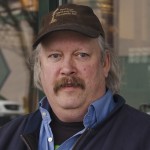Each day, Fred Heutte, lead volunteer for the Sierra Club’s Federal and International Climate Campaign, is providing updates about the day’s events at COP21, the Paris Climate Conference. I will reprint these in this blog with his permission.
TUESDAY, DEC. 1 — Today was mostly a day for opening plenaries and informal (non-public) ADP spin-off groups, and there is little of substance to report yet (but a huge amount of rumors), so it’s a good time to review the basic meeting structure of the UNFCCC.
Conference Structure
This year’s UN climate conference actually consists of five overlapping meetings. As of Tuesday, all five are now up and running for COP 21. To give their acronyms: COP, SBI, SBSTA, CMP and ADP.
At the top is the COP — the Conference of the Parties to the UN Framework Convention on Climate Change.
Under the COP are two permanent advisory bodies — the Subsidiary Body for Implementation (SBI) and the Subsidiary Body for Scientific and Technological Advice (SBSTA). The SBs meet twice a year, in June and alongside the annual COP.
The SBI and SBSTA do a fair amount of routine work taking in updates and issuing reports, but they also play a wide variety of roles assisting the COP. The SBI, for example, sets meeting dates, manages elections for chairs and other positions for all the bodies, national greenhouse gas emissions inventory reports, and various technical reviews.
Among the things on the SBSTA’s agenda are oversight of the Nairobi Work Programme on adaptation, the Technology Mechanism, issues related to agriculture, the Warsaw International Mechanism for Loss and Damage, and so on and so on.
Going forward after the Paris Agreement is concluded, the SBI and SBSTA will actually become more prominent and important because they will also advise what is provisionally being called the CMA, the Conference of the Parties serving as the Meeting of the Parties to the Paris Agreement.
The Kyoto Protocol, which continues until 2020, is overseen by the Conference of the Parties Serving as the Meeting of the Parties, usually called CMP (formerly COP-MOP).
And the temporary group set up at COP 17 in December 2011 to develop and negotiate the Paris Agreement and associated decisions is the Ad-Hoc Working Group on the Durban Platform for Enhanced Action, always called the ADP. This group will probably go out of existence on Saturday, when it hands off the Paris Agreement and decision texts to the COP.
Information on all these bodies and their agendas can be found at http://unfccc.int/2860.php
Meeting Structure
Each of the five bodies — the COP and the SBI, SBSTA, CMP and ADP — have a formal decision-making body that meets in a Plenary. Those meetings are totally open to Parties, observers and media and are broadcast on the web. The webcasts can be watched (and a few hours after the fact, replayed) at http://unfccc.int/meetings/paris_nov_2015/meeting/8926/php/view/webcasts.php
The formal requirements for conducting business in Plenaries means that negotiating bodies like the ADP often create a Contact Group for much of their work. Contact Groups are still usually open to Parties and observers (but not, by tradition, to media), and not on the web. Today, for example, the ADP Contact Group reconvened and is guiding the remaining negotiations for the ADP this week. This is where reports from the spinoff (or Spin-Off) groups come back and countries debate the broad issues for the Paris Agreement.
Below the Contact Group can be a variety of even more temporary and specialized groups. Lately the term has been Spin-Off Group or SOG. These usually have a fairly narrow scope such as the Spin-Off Group on Capacity Building. Their job is supposed to be considering the options in the text and “finding points of convergence” and “landing zones.” But in practice, while they help clarify country positions on many issues, they haven’t proven very good at narrowing the options.
So — starting from the bottom in the ADP this week … the Spin-Off Groups will increase understanding of the options and maybe recommend some directions. The ADP Contact Group will convene daily for “stocktaking” and then a semi-final draft will be issued by this Friday at 8 a.m. On Saturday morning the ADP Plenary is supposed to approve the final draft and forward it to the COP, which will have a plenary on Saturday afternoon and set the stage for week 2.
State of Play Dateline
[x] Sunday 29 ADP pre-plenary
[x] Monday 30 COP opening plenary – Leader Event
[x] Tuesday 1 COP/CMP joint plenary, SBI and SBSTA opening plenaries,
start of ADP contact group and spinoffs
[ ] Wednesday 2
[ ] Thursday 3
[ ] Friday 4 – revised ADP text 8 am
[ ] Saturday 5 closing ADP plenary, COP plenary
[ ] Sunday 6 [COP 21 closed]
[ ] Monday 7 High Level Segment
[ ] Tuesday 8 High Level Segment
[ ] Wednesday 9
[ ] Thursday 10
[ ] Friday 11 closing COP plenary
further info: phred@sunlightdata.com

